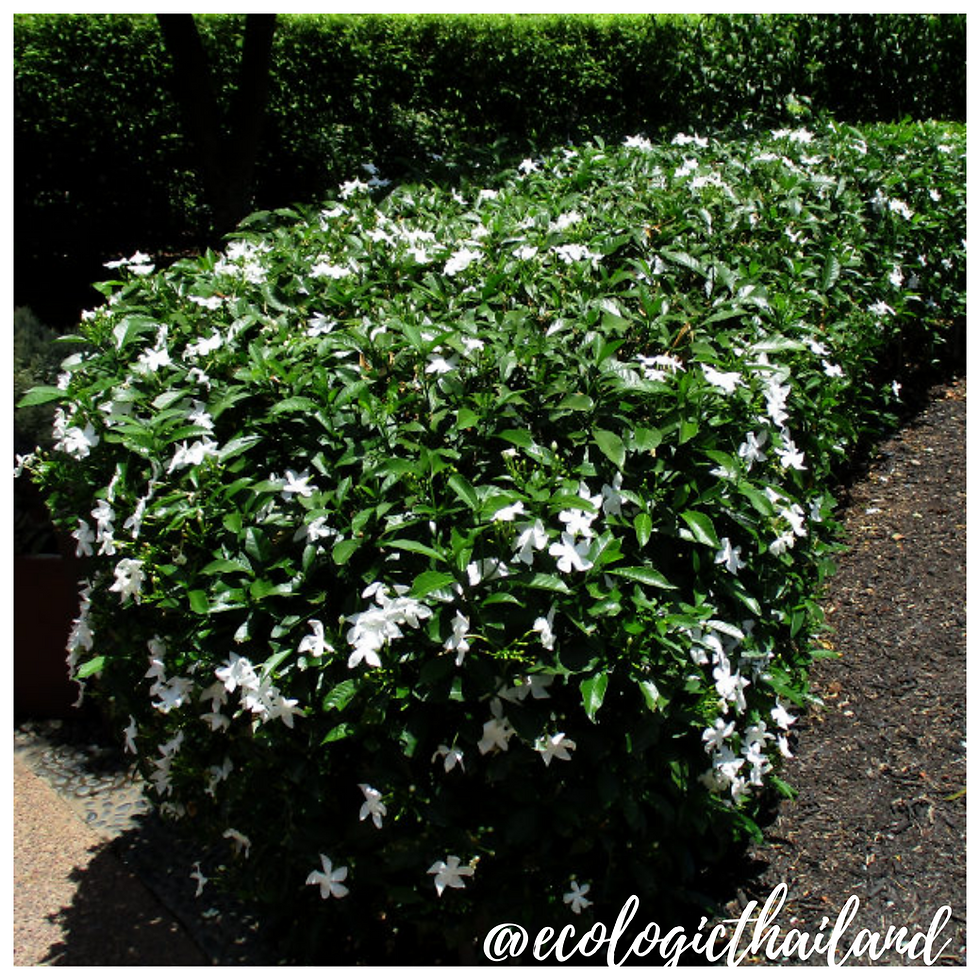Blood Lily
- Eco-Logic Resort
- Apr 19, 2021
- 3 min read
Wan saeng a thit | ว่านแสงอาทิตย์ | Scadoxus Multiflorus
Family: Amaryllidaceae - Genus: Scadoxus

The beautiful red flower balls of the Blood Lily pop up around Eco-Logic's restaurant during the month of April and May.
The Blood lily, also known as ball lily, fireball lily, blood flower, Katherine-wheel, oxtongue lily, poison root and powderpuff lily, is a bulbous plant with brilliant colored red flowers,
The leaves and flower of the Blood Lily may appear together or the leaves may be produced later. Leaves are deep green, oval and the bases of the leaves are tightly wrapped together to form a false stem, 5–60 centimeter long.
The flowers are produced as an umbrella at the top of a leafless stem and can be 12-75 centimeter long. The stem is often covered with reddish brown to dark violet spots, reminding of blood, hence the name Blood Lily.
The umbrella of flowers is more-or-less globe shaped, with from 10 to 200 individual flowers.
The fruit is a berry, 5–10 mm, oval-shaped, bright orange to red in color.
NOTE: The blood lily contains chemicals that are poisonous, and harmful if ingested and causes an upset stomach.
The blood lily is blooming in April and May in Paksong

THE PLANT
The Blood lily is a bulbous plant with brilliant colored red flowers, Leaves are deep green, oval and the bases of the leaves are tightly wrapped together to form a false stem, 5–60 centimeter long. The flowers are produced as an umbrella at the top of a leafless stem and can be 12-75 centimeter long. The umbrella of flowers is more-or-less globe shaped, with from 10 to 200 individual flowers. The fruit is a berry, 5–10 mm, oval-shaped, bright orange to red in color.

THE LEAVES
The leaves and flower of the Blood Lily may appear together or the leaves may be produced later. Leaves are deep green, oval and the bases of the leaves are tightly wrapped together to form a false stem, 5–60 centimeter long.

THE FLOWERS
The flowers are produced as an umbrella at the top of a leafless stem and can be 12-75 centimeter long. The stem is often covered with reddish brown to dark violet spots, reminding of blood, hence the name Blood Lily.
The umbrella of flowers is more-or-less globe shaped, with from 10 to 200 individual flowers.

THE FRUIT
The fruit is a berry, 5–10 mm, oval-shaped, bright orange to red in color.
CULINARY USES
No culinary uses for this plant.
NOTE: The blood lily contains chemicals that are poisonous, and harmful if ingested and causes an upset stomach.
TRADITIONAL MEDICINAL USE
NOTE: please take advice from a doctor if you are planning to use herbal medicine.
A word of caution: The blood lily contains chemicals that are poisonous.
The bulb is said to be used to treat dropsy, scabies and poorly healing wounds. In South Africa, the bulb is used to treat coughs and gastro-intestinal problems and forms part of a medicine taken during pregnancy to ensure a safe delivery.
INTO THE WILD: a down to earth experience

For guests and visitors to Paksong we organize weekly tours "The Edible Forest" and Foraging weekends: Into the Wild. We work with local guides to take you in the jungle of Paksong. After foraging, we will cook a meal with the ingredients, using bamboo together with you!
Come and join and learn about the abundance of food that nature gives us!
INTO THE WILD!


















Comments